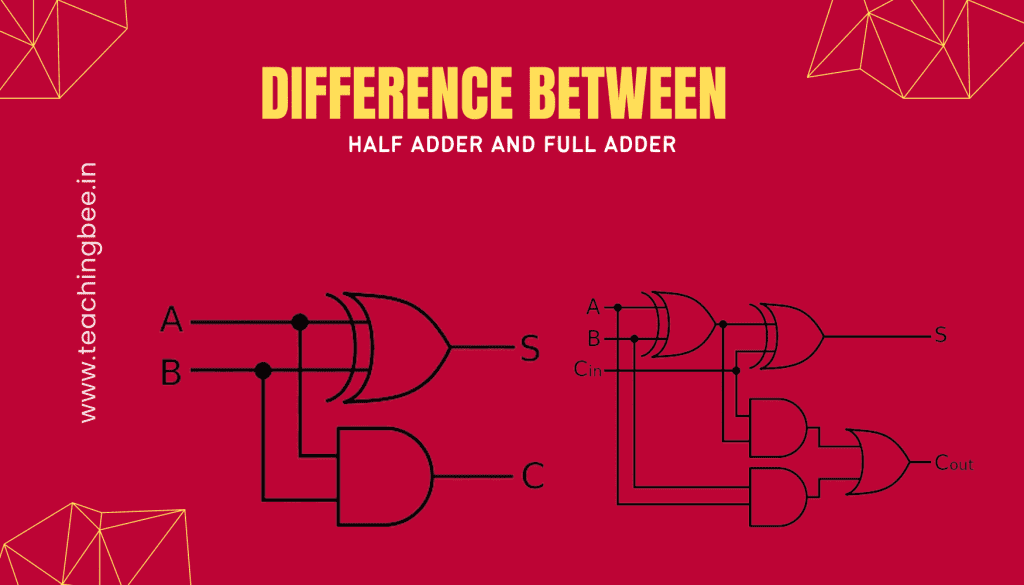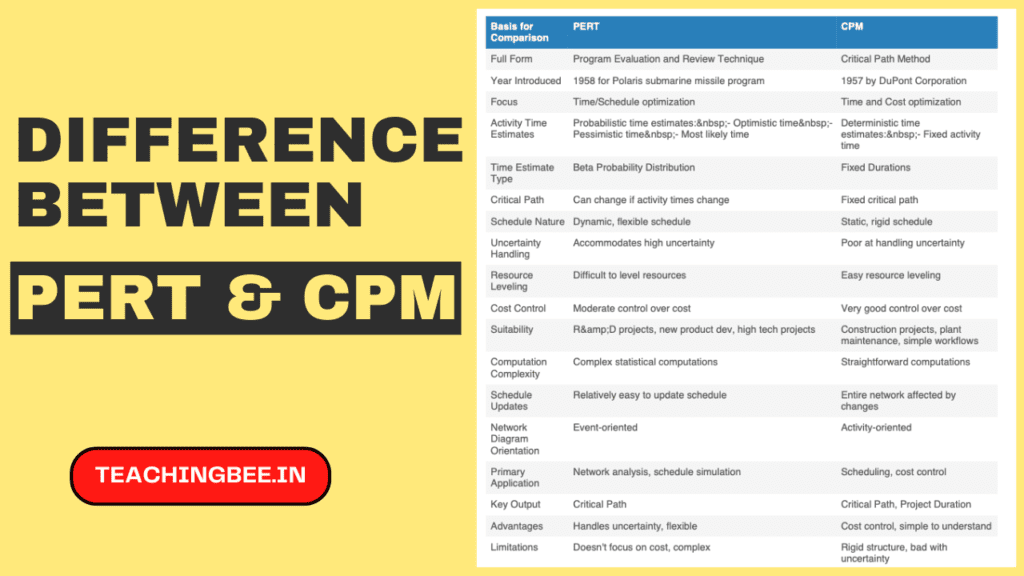Table of Contents
ToggleIntroduction
An adder is a type of logic circuit that adds two numbers sent from the processing instructions. Adders are used in various types of computer components and processors to calculate address, calculate table indices in ALU (Arithmetic Logic Unit) and various other operations. Adders can be divided into two categories
- Half adder
- Full adder
In this post we will look into some of the difference between Half Adder and Full Adder along with circuit diagram and discuss some of the advantages and limitations of each.
Let’s look at the difference between Half Adder and Full Adder first.
Difference Between Half Adder And Full Adder
| S.No. | Half Adder | Full Adder |
| 1 | Half Adder is combinational logic circuit which adds two 1-bit digits. | Full adder is combinational logical circuit that performs an addition operation on three one-bit binary numbers |
| 2 | It takes two one bit input digits and and produces two outputs i.e. sum and carry | It takes three input signals and generates two outputs sum and carry. |
| 3 | Half adder is combination of one XOR and one AND gate. | Full Adder consists of two XOR gates, two AND gates and one OR gate |
| 4 | Previous carry is not used. | Previous carry is used. |
| 5 | Logical Expression for half adder is Sum = A XOR B Carry = A AND B | Logical Expression for Full adder is SUM = (A XOR B) XOR Cin CARRY-OUT = A AND B OR Cin(A XOR B) |
| 6 | It is used in Calculators, ALU and digital measuring devices etc. | It is used in Multiple bit addition, Ripple carry adder, Program Counter etc. |
Half Adder
The half adder has two input digits and and produces two output i.e. sum and carry. Half adder is combination of XOR and AND gate where XOR is applied to both inputs to produce sum and AND gate is
applied to both inputs to produce carry.
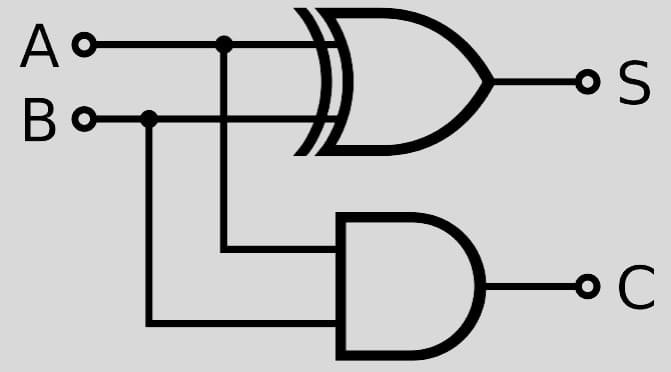

Since half adder has only two input signals therefore we can only add two digits. To add more than two digits we need to use Full Adder which is one of the key difference between half adder and full adder.
Symbol of Half Adder
Symbol of half adder circuit is shown below.


Logical Expression
Sum = A XOR B Carry = A AND B
Truth Table of Half Adder
| A | B | A + B | Sum (A ⊕ B) | Carry (A ⋅ B) |
| 0 | 0 | 0 + 0 | 0 | 0 |
| 0 | 1 | 0 + 1 | 1 | 0 |
| 1 | 0 | 1 + 0 | 1 | 0 |
| 1 | 1 | 1 + 1 | 0 | 1 |
Advantages and Limitations Of Half Adder
Advantages
- Half adder has simple design, and is thus the basic building block to understand 1-bit addition.
- Half adder can be converted to half subtractor just by using NOT gate
Limitations
- Half adders cannot add the carry bit resulting from the addition of previous bits as half adder has only two input signals.
- Real time scenarios involving addition of the multiple number of bits cannot be performed using half adders
Applications Of Half Adder
- Half adder is used in ALU to perform the binary addition operation on two bits.
- Combination of Half adders is used to make full adders.
- These logic circuits are preferred in the design of calculators.
- They are also used to calculate the addresses and tables
Full Adder
Full Adder is logic circuit which takes three input signals and generates two outputs sum and carry.Full Adder consists of two XOR gates, two AND gates and one OR gate.
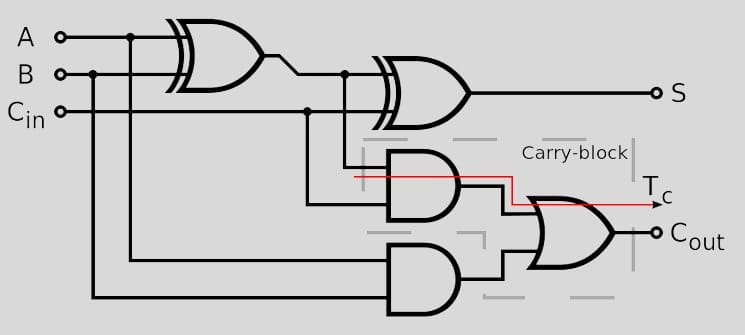

The first two inputs of full adder are A and B and the third input is an input carry denoted as C-IN. The output carry is denoted as C-OUT and the normal output or sum is denoted as S. The Equation formed by XOR gate provides sum whereas the output of AND gate gives the carry of addition.
The main difference between a half-adder and a full adder is that the full-adder has three inputs and two outputs, whereas half adder has only two inputs and two outputs.
Symbol of Full Adder
Symbol of full adder circuit is shown below
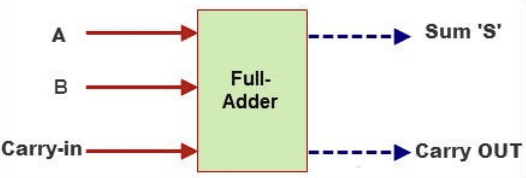

Logical Expression
SUM = (A XOR B) XOR Cin CARRY-OUT = A AND B OR Cin(A XOR B)
Truth Table of Full Adder
| Carry In | Input A | Input B | SUM (A ⊕ B ⊕ C) | Carry Out ((A ⋅ B) + Cin(A ⊕ B)) |
| 0 | 0 | 0 | 0 | 0 |
| 0 | 1 | 0 | 1 | 0 |
| 0 | 0 | 1 | 1 | 0 |
| 0 | 1 | 1 | 0 | 1 |
| 1 | 0 | 0 | 1 | 0 |
| 1 | 1 | 0 | 0 | 1 |
| 1 | 0 | 1 | 0 | 1 |
| 1 | 1 | 1 | 1 | 1 |
Advantages and Limitations Of Full Adder
Advantages
- Full adders can add the carry bit resulting from the addition of previous bits thus removing limitation of half adders and is one of the key difference between Half Adder and Full Adder
- Full adders can also be used half adders.
Limitations
- Full adders design is more complex than half adders and has more connections.
Applications of Full Adder
A full adder can be used as a part of many other larger circuits like
- Full Adder is used in Ripple carry adder which adds n-bits at a time.
- It is also used to carryout multiplication.
- It is used in ALU- Arithmetic Logic Unit.
- It is also used to generate memory addresses inside a computer and to make the Program Counter point to next instruction.
Conclusion
In this article we discussed major difference between half adder and full adder. We also saw circuit diagram along with advantages and limitations of each.
Got a question or just want to chat? Comment below or drop by our forums, where a bunch of the friendliest people you’ll ever run into will be happy to help you out!

